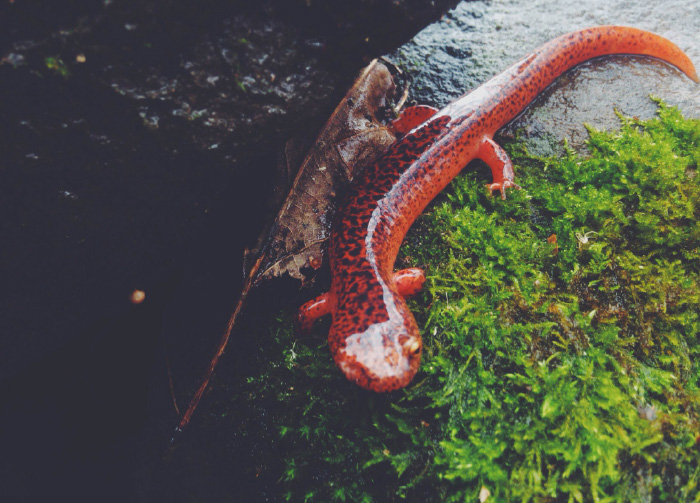
_David Keller
Keller is the project coordinator for fisheries at the Academy of Natural Sciences of Drexel University.
Many salamanders need water to breathe through their moist skin, so salamanders typically found by water can serve as indicators of water quality. While most states lack monitoring programs for stream salamanders, Academy scientists hope to change that by using their assessments of salamanders in the Delaware River watershed to create an index of stream health, much like how researchers use fish.
“We’re trying to understand what habitat features are important to salamanders in the Delaware and which ones are not; and for the features that are important, we’re trying to quantify them,” says fisheries coordinator David Keller.
The researchers visit different clusters of the Delaware River watershed to develop methods to assess salamander abundance. Sometimes, the work can be as backbreaking as repeatedly lifting rocks to find hiding salamanders.
“By the method we’re using, we’re not able to catch all of the salamanders in a given area. What we are able to do is to get an estimate of the relative density of animals in a given area by using CPUE, or catch per unit effort,” Keller says.
Each grouping of the sites will, in theory, show how salamanders are responding to anthropogenic stress, which can vary by site. Stormwater runoff is prevalent in Philadelphia, whereas agriculture is the main stressor to the environment in the Brandywine-Christina area. It’s a lot of ground (and rocks!) to cover, but Keller hopes that the work will give scientists another tool for monitoring water quality.

water_sentinels
Salamanders are sensitive to habitat loss and stream impairment, and existing protocols for their study are inadequate.
